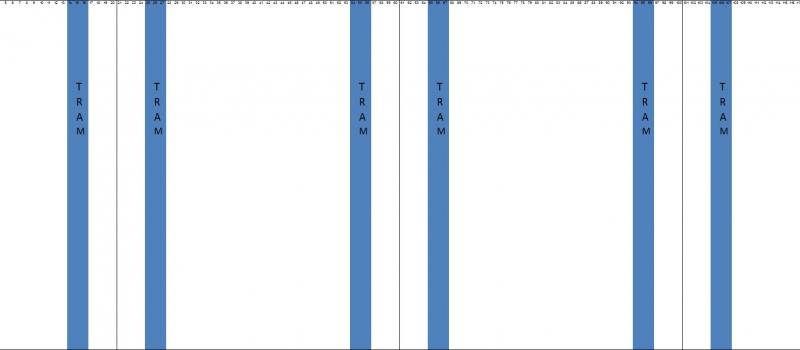Background
Soil compaction caused by farm machinery has been shown to limit crop yield.
The greatest damage is done by equipment with axle loads in excess of ten tonnes, which is quite common on today’s grain farms. Farms practicing zero tillage will typically traffic 40% of their field area annually and up to 90% bi-annually if they seed in opposite directions. Conventional till and minimum-till producers can traffic upwards of 90% annually. Freeze/thaw cycles do not deal with subsoil compaction because they do not occur multiple times per season, and it is the subsoil compaction which can become a problem with heavy equipment traffic. Controlled traffic farming (CTF) has proven effective in parts of the world at minimizing the effects of compaction. It does this by controlling the area of the field driven on. If producers match implement width and standardize their wheel or track gauge, they can reduce their trafficked area to 20% or less. RTK guidance is a must in a CTF system as tramlines need to be repeated within and across seasons. In some parts of the world, producers have seen upwards of a 10% increase in yield by moving to a CTF system.
Objective
To determine the impact of CTF adoption on crop yield on a Newdale clay loam and Harding clay soil in south-western Manitoba.
Approach
We set up field scale plots comparing a random traffic system (RT) to a controlled traffic system (CTF). Plots are arranged in a side x side fashion across the field at two different sites and run 120 ft x 2640 ft. Plots are replicated four times. Both sites have CTF employed across the plots. The CTF plots have roughly 20% of the area trafficked and the RT plots have roughly 85% of the area trafficked.
The actual operations do not occur, but the traffic is simulated at the same time that these operations would normally take place. Simulation involves driving the machinery up and down the plot until the required area is covered. Traffic lanes are recorded with RTK in order that they may be repeated in each year of the trial. The CTF traffic lanes are used as a reference point when simulating the random traffic.
Yield measurements will be performed in years two, three and four of the trial. Reps are weighed with a grain cart scale during harvest.
In addition to comparing yields, we plan to measure soil bulk density and infiltration rates in the final year of the experiment to determine what, if any effect CTF has had on these soil properties.
Equipment
Tractor 1 – Agco Challenger MT 865 with 30” tracks and 128” gauge
Tractor 2 – Agco Challenger MT 765 with 18” tracks and 132” wheel gauge
Combine – Lexion 760TT with 35” tracks, 134” gauge and 40' header
Sprayer – 120' Case 4420 with 132” gauge
Drill – 80' SeedHawk with 800 bushel seed tank with 32” tracks and 174” gauge
Grain cart – Parker 750 bushel capacity with 30.5 x 32 tires 120” gauge
For the most part the equipment wheel and track gauges are standardized. The air tank on the drill is not standardized, but most of the time will have an axle load less than 10 tonnes. In a 3:1 CTF system, seed drills are typically 1/3 the width of the sprayer; in this case the drill is 2/3 the width of the sprayer. What this will mean is that the RT reps will receive 2X the amount of seeding traffic as the CTF reps. We consider this to be acceptable, as it will more closely resemble the amount of area trafficked during a seeding operation.
Plot width needs to be 120 ft in order to facilitate accurate harvesting of reps, while staying on tramlines. At 80 ft widths, the harvester would straddle the boundaries of the reps.
White - Not Trafficked Area
Other Colours- Trafficked Area

